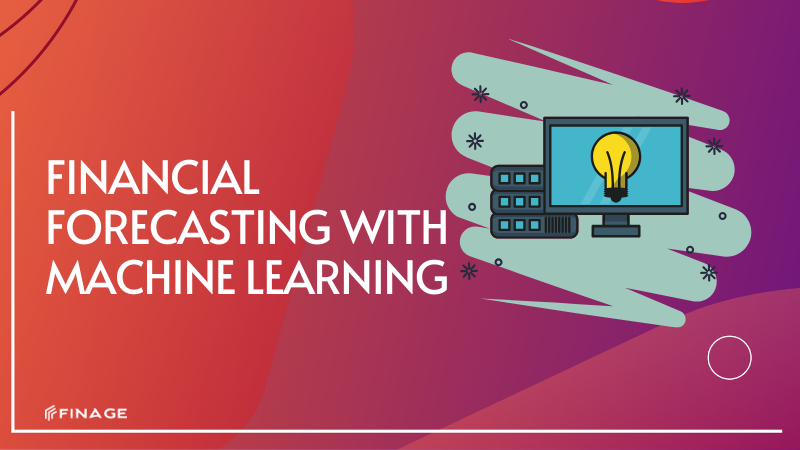
Financial Forecasting with Machine Learning
Machine Learning (ML) stands as a powerful force revolutionizing financial forecasting, ushering in a new era of capabilities and insights previously unattainable through conventional methodologies. Through the application of ML algorithms, financial analysts and institutions can glean deeper and more accurate predictions regarding future market trends, customer behaviors, and financial outcomes. This blog aims to delve into the pivotal role of machine learning in financial forecasting, elucidating its manifold benefits, various techniques employed, and the challenges it confronts.
One of the primary advantages of employing ML in financial forecasting lies in its ability to process vast volumes of complex financial data and extract meaningful patterns and correlations. ML algorithms, such as neural networks, random forests, and support vector machines, analyze historical market data, macroeconomic indicators, and consumer behaviors to generate predictive models. These models not only enhance the accuracy of financial predictions but also enable quicker adaptation to evolving market dynamics, providing a competitive edge in decision-making.
Moreover, ML techniques like deep learning and natural language processing (NLP) enable the analysis of unstructured data sources such as news articles, social media sentiments, and textual information, offering additional insights into market sentiments and trends. This amalgamation of structured and unstructured data broadens the scope of analysis, contributing to more nuanced and informed financial forecasts.
Table of Contents
- The Role of Machine Learning in Financial Forecasting
- Evolution of Financial Forecasting
- How Machine Learning Enhances Forecasting
- Machine Learning Techniques in Forecasting
- Supervised and Unsupervised Learning
- Time Series Analysis and Prediction
- Applications in Different Financial Domains
- Stock Market Prediction
- Credit Risk Analysis
- Budget Forecasting and Expense Management
- Data Sources and Processing for ML
- Importance of Quality Data
- Preprocessing Techniques
- Challenges and Limitations
- Dealing with Uncertainty and Volatility
- Data Privacy and Security Concerns
- Integrating ML with Traditional Forecasting Methods
- Combining Human Expertise with ML Insights
- Enhancing Decision-Making Processes
- Future Trends in ML-Based Forecasting
- Advancements in AI and Machine Learning
- Emerging Technologies and Their Impact
- Conclusion
The Role of Machine Learning in Financial Forecasting
Evolution of Financial Forecasting
Financial forecasting has traditionally relied on statistical models and human expertise. The integration of ML brings a paradigm shift, enabling more dynamic and complex analysis.
How Machine Learning Enhances Forecasting
ML algorithms can analyze vast datasets, identify hidden patterns, and make predictions about future financial events with a higher degree of accuracy.
Machine Learning Techniques in Forecasting
Supervised and Unsupervised Learning
Supervised learning, with labeled data, is commonly used for predictions, while unsupervised learning helps in uncovering unknown patterns in financial data.
Time Series Analysis and Prediction
ML models are particularly adept at time series analysis, crucial for forecasting stock prices, economic indicators, and market trends.
Applications in Different Financial Domains
Stock Market Prediction
ML algorithms are used to forecast stock market movements, aiding investors in making informed trading decisions.
Credit Risk Analysis
In banking, ML helps in assessing credit risk by analyzing borrower data and predicting the likelihood of defaults.
Budget Forecasting and Expense Management
Companies use ML to forecast budgets and manage expenses by analyzing spending patterns and financial trends.
Data Sources and Processing for ML
Importance of Quality Data
The accuracy of ML predictions heavily relies on the quality and relevance of the data used.
Preprocessing Techniques
Effective data preprocessing techniques are essential to prepare financial data for ML modeling, including handling missing values, normalization, and feature selection.
Challenges and Limitations
Dealing with Uncertainty and Volatility
Financial markets are inherently volatile and unpredictable, posing challenges to ML models in making accurate predictions.
Data Privacy and Security Concerns
Handling sensitive financial data raises privacy and security concerns, necessitating robust data protection measures.
Integrating ML with Traditional Forecasting Methods
Combining Human Expertise with ML Insights
The most effective forecasting approaches combine ML insights with human expertise and judgment.
Enhancing Decision-Making Processes
ML models can provide valuable inputs to financial decision-making processes, leading to more informed and effective strategies.
Future Trends in ML-Based Forecasting
Advancements in AI and Machine Learning
Ongoing advancements in AI and ML, such as deep learning and neural networks, are expected to further enhance financial forecasting capabilities.
Emerging Technologies and Their Impact
Technologies like blockchain and IoT are likely to influence ML-based financial forecasting, offering new data sources and insights.
Conclusion
Machine learning has emerged as a vital asset in the realm of financial forecasting, offering distinct advantages when compared to conventional methods. Its ability to analyze vast datasets and detect complex patterns has revolutionized predictive models in finance. However, amidst its benefits, navigating the landscape of machine learning in financial forecasting requires meticulous attention to challenges, notably concerning data quality and managing market volatility.
The integration of machine learning algorithms has revolutionized financial forecasting by enabling the analysis of multifaceted data sets and uncovering nuanced market trends. Yet, ensuring the accuracy and reliability of machine learning models hinges on the quality of input data. Issues related to data integrity, biases, and incompleteness can significantly impact the effectiveness of predictions. Moreover, market volatility poses another challenge, as machine learning models may encounter difficulties in adapting to sudden and unforeseen shifts in market conditions. Addressing these challenges necessitates a cautious approach, incorporating robust data preprocessing techniques, continuous model refinement, and stress-testing against various market scenarios. By proactively addressing data quality concerns and developing strategies to handle market volatility, financial institutions can harness the transformative potential of machine learning in forecasting while mitigating associated risks.
You can get your Real-Time and Historical Market Data with a free API key.
Build with us today!


